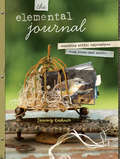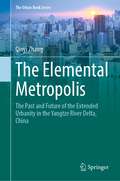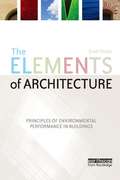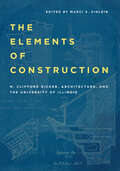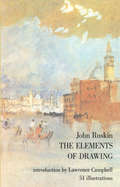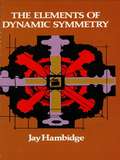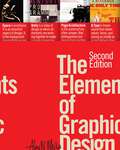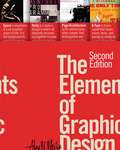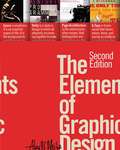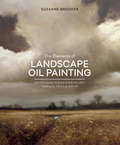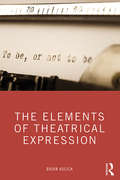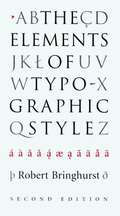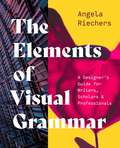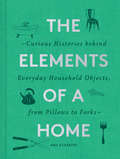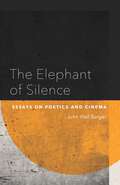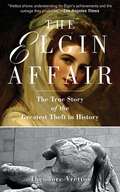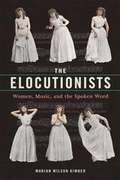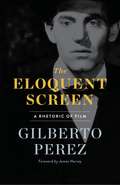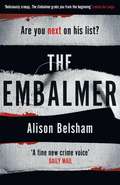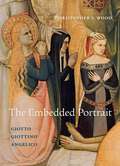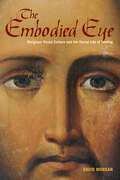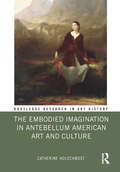- Table View
- List View
The Elemental Journal: Composing Artful Expressions from Items Cast Aside
by Tammy KushnirCreate Expressive Books from Salvaged TreasuresRusty doorknobs, cardboard containers and plastic packaging may seem like trash to some, but through the creative mind, they are transformed into beautiful expressions - equally parts artful book and assemblage. The Elemental Journal will show you how to craft a wide variety of journals to hold your secrets or express your inner thoughts, and discover new ways to use wood, paper, fabric, plastic and metal in your art.Peek inside The Elemental Journal and you will find...15 stepped-out journal projects made from unusual materials and found objects, from tree bark to dismantled photo albums to tin boxes.Tips for seeking out materials for your journals in flea markets, garage sales, and in your own attic or trash can.Inspiring gallery projects from 9 contributing artists, including Susan Tuttle, Jen Osborn and Jill Berry.One artist's trash is another's treasure. Discover yours with The Elemental Journal.
The Elemental Metropolis: The Past and Future of the Extended Urbanity in the Yangtze River Delta, China (The Urban Book Series)
by Qinyi ZhangThis book provides a multi-scale reading of the spatial “elements” in which the extensive urbanity in Yangtze River Delta is constructed, and from there an imagination of a new paradigm of urbanization. The urbanization in Yangtze River Delta today is in need of a new interpretation and paradigm. The delta is a territory with city cores but it also has vast dispersed urbanization where the agricultural and non-agricultural activities and spaces are mixed and interlinked, a desakota (McGee, 1991). This book attempts to answer a basic question: what is the desakota in the Yangtze River Delta made of? The research Horizontal Metropolis led by Prof. Paola Viganò at EPFL, Switzerland focuses on the form of the contemporary city – the fragmentary spatial condition and dispersed urbanity all over the world. The study on Yangtze River delta is part of its research frame.
The Elements of Architecture: Principles of Environmental Performance in Buildings
by Scott DrakeThe Elements of Architecture is a clear and well structured introduction to sustainable architecture, which concentrates on general principles to make an accessible and comprehensive primer for undergraduate students. The author takes a fresh and logical approach, focusing on the way aspects of the built environment are experienced by the occupants and how that experience is interpreted in architectural design. He works through basic elements and senses (sun; heat; light; sound; air; water and fire) to explain and frame effective environmental architectural design - not only arguing that the buildings we inhabit should be viewed as extensions of our bodies that interact with and protect us from these elements, but also using this analogy to explain complex ideas in an accessible manner.
The Elements of Construction: N. Clifford Ricker, Architecture, and the University of Illinois
by N. Clifford RickerA pioneer of architecture education in the United States, N. Clifford Ricker notably taught with an emphasis on construction and shop practice in his teaching. Marci S. Uihlein edits and elaborates on The Elements of Construction, the text on building materials that Ricker wrote and used in his teaching, but never published. The book is a window into the expanding possibilities of the late nineteenth-century, as Ricker continually revised The Elements of Construction to keep up with advances taking place in architecture, materials, and construction technology. In addition to providing the full text, Uihlein and the contributors trace Ricker’s career and delve into his practice of teaching. Subject experts explore specific topics. Thomas Leslie surveys contemporary construction practices in Chicago. Tom F. Peters considers Ricker’s writings in the context of the time while Rachel Will looks at masonry know-how and testing. Donald Friedman examines the teaching of iron and steel construction. An illuminating look at a field and a legacy, The Elements of Construction rediscovers a figure that shaped the teaching of architecture and trained a generation that forever changed Chicago.
The Elements of Drawing: In Three Letters To Beginners (Dover Art Instruction)
by John RuskinCan drawing -- sound, honest representation of the world as the eye sees it, not tricks with the pencil or a few "effects" -- be learned from a book? One of the most gifted draftsmen, who is also one of the greatest art critics and theorists of all time, answers that question with a decided "Yes." He is John Ruskin, the author of this book, a classic in art education as well as a highly effective text for the student and amateur today.The work is in three parts, cast in the form of letters to a student, successively covering "First Practice," "Sketching from Nature," and "Colour and Composition." Starting with the bare fundamentals (what kind of drawing pen to buy; shading a square evenly), and using the extremely practical method of exercises which the student performs from the very first, Ruskin instructs, advises, guides, counsels, and anticipates problems with sensitivity. The exercises become more difficult, developing greater and greater skills until Ruskin feels his reader is ready for watercolors and finally composition, which he treats in detail as to the laws of principality, repetition, continuity, curvature, radiation, contrast, interchange, consistency, and harmony. All along the way, Ruskin explains, in plain, clear language, the artistic and craftsmanlike reasons behind his practical advice -- underlying which, of course, is Ruskin's brilliant philosophy of honest, naturally observed art which has so much affected our aesthetic. Three full-page plates and 48 woodcuts and diagrams (the latter from drawings by the author) show the student what the text describes. An appendix devotes many pages to the art works which may be studied with profit.
The Elements of Dynamic Symmetry (Dover Art Instruction)
by Jay HambidgeIs design intuitive or is it consciously and methodically worked out? Are there basic rules governing design that, when learned, will facilitate the creative process? These questions have been asked by artists, art historians, and art critics throughout the ages.Convinced that design was not purely instinctive, Jay Hambidge (1867-1924) spent much of his life searching for the technical bases of design. He found his answer in dynamic symmetry, one of the most provocative and stimulating theories in art history. Hambidge's study of Greek art convinced him that the secret of the beauty of Greek design was in the conscious use of dynamic symmetry -- the law of natural design based upon the symmetry of growth in man and in plants. But Hambidge, who was not only a theoretician but also a practicing artist, did much more than analyze classical art and its principles of design: he worked out a series of root rectangles that the artist, using the simple mathematics supplied in this book, can easily follow and apply in his own work.Originally published as a series of lessons in Hambidge's magazine, The Diagonal, this engrossing book explains all the basic principles of dynamic symmetry. Part I sets forth the fundamental rectangles with their simple divisions based on the proportioning law found in nature; Part II explains compound rectangles, many of which were taken from or suggested by analysis of objects of Greek art. Whether read for its historical importance in art theory, for its illuminating insights into Greek art, or for its practical value to today's artists and commercial designers, The Elements of Dynamic Symmetry has much to offer anyone who is interested in the principle of design.
The Elements of Graphic Design
by Alex W. WhiteThis very popular design book has been wholly revised and expanded to feature a new dimension of inspiring and counterintuitive ideas to thinking about graphic design relationships. The Elements of Graphic Design, Second Edition is now in full color in a larger, 8 x 10-inch trim size, and contains 40 percent more content and over 750 images to enhance and better clarify the concepts in this thought-provoking resource. The second edition also includes a new section on Web design; new discussions of modularity, framing, motion and time, rules of randomness, and numerous quotes supported by images and biographies. This pioneering work provides designers, art directors, and students--regardless of experience--with a unique approach to successful design. Veteran designer and educator Alex. W. White has assembled a wealth of information and examples in his exploration of what makes visual design stunning and easy to read. Readers will discover White's four elements of graphic design, including how to: define and reveal dominant images, words, and concepts; use scale, color, and position to guide the viewer through levels of importance; employ white space as a significant component of design and not merely as background; and use display and text type for maximum comprehension and value to the reader. Offering a new way to think about and use the four design elements, this book is certain to inspire better design.
The Elements of Graphic Design
by Alex W. WhiteThis very popular design book has been wholly revised and expanded to feature a new dimension of inspiring and counterintuitive ideas to thinking about graphic design relationships. The Elements of Graphic Design, Second Edition is now in full color in a larger, 8 x 10-inch trim size, and contains 40 percent more content and over 750 images to enhance and better clarify the concepts in this thought-provoking resource. The second edition also includes a new section on Web design; new discussions of modularity, framing, motion and time, rules of randomness, and numerous quotes supported by images and biographies. This pioneering work provides designers, art directors, and students--regardless of experience--with a unique approach to successful design. Veteran designer and educator Alex. W. White has assembled a wealth of information and examples in his exploration of what makes visual design stunning and easy to read. Readers will discover White's four elements of graphic design, including how to: define and reveal dominant images, words, and concepts; use scale, color, and position to guide the viewer through levels of importance; employ white space as a significant component of design and not merely as background; and use display and text type for maximum comprehension and value to the reader. Offering a new way to think about and use the four design elements, this book is certain to inspire better design.
The Elements of Graphic Design: Space, Unity, Page Architecture, and Type (2nd Edition)
by Alex W. WhiteThis pioneering work has been wholly revised and expanded to feature a new dimension of inspiring and counter-intuitive ideas to thinking about graphic design relationships and provides designers, art directors, and students--regardless of experience--with a unique approach to successful design. The second edition includes a new section on Web design; new discussions of modularity, framing, motion and time, rules of randomness, and numerous quotes supported by images and biographies.
The Elements of Landscape Oil Painting
by Suzanne BrookerA landscape painting guide for oil painters that breaks landscapes down into component elements from nature, and showcases tools and techniques used by classic and modern oil painters for bringing these scenes to life. Landscape painting is one of the most popular subjects for painters working in the medium of oils--from classic masters to contemporary artists. In The Elements of Landscape Oil Painting, established Watson-Guptill author and noted instructor/painter Suzanne Brooker presents the fundamentals necessary for mastering landscape oil painting, breaking landscapes down into component parts: sky, terrain, trees, and water. Each featured element builds off the previous, with additional lessons on the latest brushes, paints, and other tools used by artists. Key methods like observation, rendering, and color mixing are supported by demonstration paintings and samples from a variety of the best landscape oil painters of all time. With The Elements of Landscape Oil Painting, oil painters looking to break into landscape painting or enhance their work will find all the necessary ingredients for success.
The Elements of Theatrical Expression
by Brian KulickThe Elements of Theatrical Expression puts forward 14 essential elements that make up the basic building blocks of theatre. Is theatre a language? Does it have its own unique grammar? And if so, just what would the elements of such a grammar be? Brian Kulick asks readers to think of these elements as the rungs of a ladder, scaling one after the other to arrive at an aerial view of the theatrical landscape. From such a vantage point, one can begin to discern a line of development from the ancient Greeks, through Shakespeare and Chekhov, to a host of our own contemporary authors. He demonstrates how these elements may be transhistorical but are far from static, marking out a rich and dynamic theatrical language for a new generation of theatre makers to draw upon. Suitable for directors, actors, writers, dramaturges, and all audiences who yearn for a deeper understanding of theatre, The Elements of Theatrical Expression equips its readers with the knowledge that they need to see and hear theatre in new and more daring ways.
The Elements of Typographic Style (2nd edition)
by Robert BringhurstThis book is intended to be more than a short manual of typographic etiquette, as it includes the history and technical details of typography with an additional chapter on digital typography.
The Elements of Visual Grammar: A Designer's Guide for Writers, Scholars, and Professionals (Skills For Scholars Ser.)
by Angela RiechersA color-illustrated introduction to the basic principles of visual language that every content creator and consumer needs to knowThe right images capture attention, pique curiosity, and inspire viewers to stick around long enough to read any accompanying text. Nearly everyone today needs to use or understand images in communications of all kinds, from the most formal professional publication to the most casual social media post, and knowing the basics of visual language is essential for content creators and consumers alike. However, most people aren’t taught visual grammar unless they go into art- or design-related fields. The Elements of Visual Grammar explains image use in any media in practical terms for writers, scholars, and other professionals. Award-winning art director and design professor Angela Riechers offers a flexible set of principles and best practices for selecting images that work—and using them in the most persuasive way. The result is an indispensable guide for anyone who wants to learn how to work more successfully with images and words.Features more than 200 color illustrations—drawn from a wide range of styles, media, and eras—that demonstrate the principles of visual grammar and how images can support and enhance written contentDefines and illustrates the basic elements of images, describes how images function within text regardless of media, and explains how to choose images and integrate them with textIntroduces the practical, cultural, conceptual, and scientific factors that influence image useAnalyzes images by function and describes ways to employ symbolism, synecdoche, allegory, metaphor, analogy, and iconography
The Elements of a Home: Curious Histories behind Everyday Household Objects, from Pillows to Forks
by Amy AzzaritoThe Elements of a Home reveals the fascinating stories behind more than 60 everyday household objects and furnishings. Brimming with amusing anecdotes and absorbing trivia, this captivating collection is a treasure trove of curiosities.With tales from the kitchen, the bedroom, and every room in between, these pages expose how napkins got their start as lumps of dough in ancient Greece, why forks were once seen as immoral tools of the devil, and how Plato devised one of the earliest alarm clocks using rocks and water—plus so much more.• A charming gift for anyone who loves history, design, or décor• Readers discover tales from every nook and cranny of a home. • Entries feature historical details from locations all over the world, including Europe, Asia, North America, and Africa. As a design historian and former managing editor of Design*Sponge, author Amy Azzarito has crafted an engaging, whimsical history of the household objects you've never thought twice about. The result is a fascinating book filled with tidbits from a wide range of cultures and places about the history of domestic luxury.• Filled with lovely illustrations by Alice Pattullo• Perfect as a housewarming or wedding gift, or for anyone who adores interior design, trivia, history, and unique facts• Great for those who enjoyed The Greatest Stories Never Told: 100 Tales from History to Astonish, Bewilder, and Stupefy by Rick Beyer, An Uncommon History of Common Things by Bethanne Patrick and John Thompson, Encyclopedia of the Exquisite: An Anecdotal History of Elegant Delights by Jessica Kerwin Jenkins
The Elephant of Silence: Essays on Poetics and Cinema
by John Wall Barger“A poem is an act of faith because the poet believes in it,” contends John Wall Barger in The Elephant of Silence, a collection of essays exploring forms of knowing (and not knowing) that awaken a poetic mind. By considering poetry, film, and the intersections among aesthetic moments and our lives, Barger illuminates the foundations of poetic craft but also probes how to be alive, creative, and open in the world. Each piece investigates unanswerable questions and indefinable words: Lorca’s duende, Nabokov’s poshlost, Bashō’s underglimmer, Huizinga’s ludic, Tarkovsky’s Zona. Influenced by poets such as Glück and Ruefle, and filmmakers such as Kubrick and Lynch, Barger writes—first always sharing his own personal life stories—on the nature of perception, experience, and the human mind. With lyric eloquence and disarming candor, The Elephant of Silence tackles how to live an imaginative life, how to gravitate toward the silence from which art comes, and how the mystical is also the everyday.
The Elephant to Hollywood
by Michael CaineCharming, engaging, and surprisingly forthright, Michael Caine gives us his insider's view of Hollywood and the story of his brilliant second actWhen he was in his late fifties, Michael Caine believed his glamorous, rags-to-riches Hollywood career had come to an end. The scripts being sent his way were worse and worse. When one script really disappointed, he called the producer to complain about the part. The producer said, "No, no, we don't want you for the lover, we want you for the father." Salvation came in the unlikely form of his old friend Jack Nicholson, who convinced him to give acting one more shot. What followed was not only an incredible personal transformation but also one of the most radical comebacks in film history. Learning to accept his new role both on camera and in his own life, Caine went on to win his second Oscar, be knighted by the queen, and deliver some of his best performances to date. Now he shares the spectacular story of his life, from his humble upbringing in London's poverty-stricken Elephant and Castle, his military service, touching marriage and family life, and lively adventures with friends, to legendary meetings with fellow stars, forays as a restaurateur, and hilarious off-screen encounters from his glittering five-decade career. Caine's The Elephant to Hollywood brings his gift for storytelling and his insider's view to a tale that is funny, warm, and deeply honest.
The Elgin Affair: The True Story of the Greatest Theft in History
by Theodore VrettosAlmost two hundred years after they were "purchased" from Greece, the finest and most famous marbles of antiquity still remain a burning issue. This compelling, controversial story of the Elgin marbles re-creates in full and colorful detail "the greatest art theft in history," a steamy tale of obsession, intrigue, adultery, and ruin. As the British ambassador to the Sublime Porte in Constantinople, Lord Elgin encountered in his endeavors some of the most famous names of nineteenth-century history: Napoleon, Sultan Selim III, Lord Nelson, Lord Byron, and Keats. Drawing on original source material-letters, diaries, official government reports, and memoranda, Vrettos brilliantly brings to life these fascinating stories.
The Elizabethan Player: Contemporary Stage Representation (Routledge Library Editions: Renaissance Drama)
by David Albert MannIn this book, first published in 1991, David Mann argues for more attention to the performer in the study of Elizabethan plays and less concern for their supposed meanings and morals. He concentrates on a collection of extracts from plays which show the Elizabethan actor as a character onstage. He draws from the texts a range of issues concerning performance practice: the nature of iterance; doubling and its implications for presentational acting; the importance of clowning and improvisation; and the effects of audience and venue on the dynamics of performance. The author suggests that the stage representation of players is in part a nostalgic farewell to the passing of an impure but perhaps more vital theatre, and in part an acknowledgement of the threat the adult theatre’s growing sophistication offered to its institutional and adolescent rivals. This title will be of interest to students of Drama and Performance.
The Elocutionists: Women, Music, and the Spoken Word
by Marian Wilson KimberEmerging in the 1850s, elocutionists recited poetry or drama with music to create a new type of performance. The genre--dominated by women--achieved remarkable popularity. Yet the elocutionists and their art fell into total obscurity during the twentieth century. Marian Wilson Kimber restores elocution with music to its rightful place in performance history. Gazing through the lenses of gender and genre, Wilson Kimber argues that these female artists transgressed the previous boundaries between private and public domains. Their performances advocated for female agency while also contributing to a new social construction of gender. Elocutionists, proud purveyors of wholesome entertainment, pointedly contrasted their "acceptable" feminine attributes against those of morally suspect actresses. As Wilson Kimber shows, their influence far outlived their heyday. Women, the primary composers of melodramatic compositions, did nothing less than create a tradition that helped shape the history of American music.
The Eloquent Screen: A Rhetoric of Film
by Gilberto PerezA lifetime of cinematic writing culminates in this breathtaking statement on film&’s unique ability to move usCinema is commonly hailed as &“the universal language,&” but how does it communicate so effortlessly across cultural and linguistic borders? In The Eloquent Screen, influential film critic Gilberto Perez makes a capstone statement on the powerful ways in which film acts on our minds and senses.Drawing on a lifetime&’s worth of viewing and re-viewing, Perez invokes a dizzying array of masters past and present—including Chaplin, Ford, Kiarostami, Eisenstein, Malick, Mizoguchi, Haneke, Hitchcock, and Godard—to explore the transaction between filmmaker and audience. He begins by explaining how film fits into the rhetorical tradition of persuasion and argumentation. Next, Perez explores how film embodies the central tropes of rhetoric––metaphor, metonymy, allegory, and synecdoche––and concludes with a thrilling account of cinema&’s spectacular capacity to create relationships of identification with its audiences. Although there have been several attempts to develop a poetics of film, there has been no sustained attempt to set forth a rhetoric of film—one that bridges aesthetics and audience. Grasping that challenge, The Eloquent Screen shows how cinema, as the consummate contemporary art form, establishes a thoroughly modern rhetoric in which different points of view are brought into clear focus.
The Embalmer: A gripping new thriller from the international bestseller
by Alison BelshamHas the ancient Egyptian cult of immortality resurfaced in Brighton?When a freshly-mummified body is discovered at the Brighton Museum of Natural History, Detective Francis Sullivan is at a loss to identify the desiccated woman. But as Egyptian burial jars of body parts with cryptic messages attached start appearing, he realises he has a serial killer on his hands. Revenge, obsession and an ancient religion form a potent mix, unleashing a wave of terror throughout the city. Caught in a race against time while battling his own demons, Francis must fight to uncover the true identity of the Embalmer before it's too late...
The Embalmer: A gripping new thriller from the international bestseller
by Alison BelshamHas the ancient Egyptian cult of immortality resurfaced in Brighton?When a freshly-mummified body is discovered at the Brighton Museum of Natural History, Detective Francis Sullivan is at a loss to identify the desiccated woman. But as Egyptian burial jars of body parts with cryptic messages attached start appearing, he realises he has a serial killer on his hands. Revenge, obsession and an ancient religion form a potent mix, unleashing a wave of terror throughout the city. Caught in a race against time while battling his own demons, Francis must fight to uncover the true identity of the Embalmer before it's too late...
The Embedded Portrait: Giotto, Giottino, Angelico
by Christopher S. WoodA new study of the early Renaissance portraitIn fourteenth-century Italy, ever more women and men—not only clergy but also laity—introduced their own portraits into sacred paintings. Images of modern supplicants, submissive and prayerful, shared space with the holy narratives. The portraits mimicked the first worshippers of Christ: Mary, the Three Magi, Mary Magdalene. At the same time, they modeled, for modern viewers, ideal involvement in the emotion-laden stories. In The Embedded Portrait, Christopher S. Wood traces these incursions of the real and profane into Florentine sacred painting between Giotto and Fra Angelico.The portraits not only intruded upon a sacred space, but also intervened in an artwork. The pressure exerted by the modern interlopers—their lives and experiences, implied by their portraits—threatened the formal closure that had served as a powerful symbolic form of the pact between God and humans. The Embedded Portrait reconstructs this art historical drama from the point of view of the artists rather than the patrons. Following clues left by Vasari, the book assigns a leading role to the painter Giottino, or &“little Giotto.&” Little-known today but highly regarded in his lifetime, Giottino proposed a new manner of painting that was later realized by Fra Angelico through his own innovative approach to the problem of the embedded portrait.Seeking not to stabilize the artworks but to extend their reach, the interpretations offered in The Embedded Portrait re-create and update the psychic and libidinal energies that gave rise to these works in the first place.
The Embodied Eye: Religious Visual Culture and the Social Life of Feeling
by David MorganDavid Morgan builds on his previous groundbreaking work to offer this new, systematically integrated theory of the study of religion as visual culture. Providing key tools for scholars across disciplines studying the materiality of religions, Morgan gives an accessibly written theoretical overview including case studies of the ways seeing is related to touching, hearing, feeling, and such ephemeral experiences as dreams, imagination, and visions. The case studies explore both the high and low of religious visual culture: Catholic traditions of the erotic Sacred Heart of Jesus, the unrecognizability of the Virgin in the Fatima apparitions, the prehistory of Warner Sallman’s face of Jesus, and more. Basing the study of religious images and visual practices in the relationship between seeing and the senses, Morgan argues against reductionist models of "the gaze," demonstrating that vision is not something that occurs in abstraction, but is a fundamental way of embodying the human self.
The Embodied Imagination in Antebellum American Art and Culture (Routledge Research in Art History)
by Catherine HolochwostThis book reveals a new history of the imagination told through its engagement with the body. Even as they denounced the imagination’s potential for inviting luxury, vice, and corruption, American audiences avidly consumed a transatlantic visual culture of touring paintings, dioramas, gift books, and theatrical performances that pictured a preindustrial—and largely imaginary—European past. By examining the visual, material, and rhetorical strategies artists like Washington Allston, Asher B. Durand, Thomas Cole, and others used to navigate this treacherous ground, Catherine Holochwost uncovers a hidden tension in antebellum aesthetics. The book will be of interest to scholars of art history, literary and cultural history, critical race studies, performance studies, and media studies.
